Scorpions are predatory arachnids of the order Scorpiones. They have eight legs and are easily recognized by the pair of grasping pedipalps and the narrow, segmented tail, often carried in a characteristic forward curve over the back, ending with a venomous stinger. Scorpions range in size from 9 mm / 0.3 in. (Typhlochactas mitchelli) to 23 cm / 9 in. (Heterometrus swammerdami).
1. Fattail Scorpion
Fattail scorpion or fat-tailed scorpion is the common name given to scorpions of the genus Androctonus. It is one of the most dangerous groups of scorpions species in the world. They are found throughout the semi-arid and arid regions of the Middle East and Africa. Their common name is derived from their distinctly fat tail, while the Latin name originates from Greek and means “man killer”.
Their venom contains powerful neurotoxins and is especially potent. Stings from Androctonus species are known to cause several human deaths each year. Several pharmaceutical companies manufacture an antivenom for treatment of Androctonus envenomations.
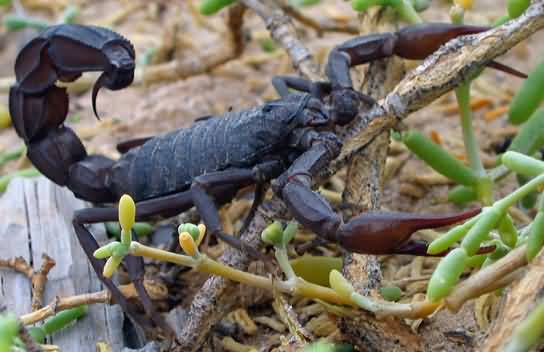
Per-Anders Olsson /CC BY-SA 3.0 | Fattail Scorpion
2. Deathstalker
The deathstalker is regarded as the most dangerous species of scorpion. It is also known as the Palestinian yellow scorpion, Palestine yellow scorpion, Omdurman scorpion and Naqab desert scorpion. Its venom is a powerful mixture of neurotoxins with a low lethal dose. While a sting from this scorpion is extraordinarily painful, it normally would not kill a healthy adult human.
However, young children, the elderly or infirmed (such as those with a heart condition and those who are allergic) would be at a much greater risk. One component of the deathstalker’s venom, the peptide chlorotoxin, has shown potential for treating human brain tumors. There has also been some evidence to show that other components of the venom may aid in the regulation of insulin and could be used to treat diabetes.
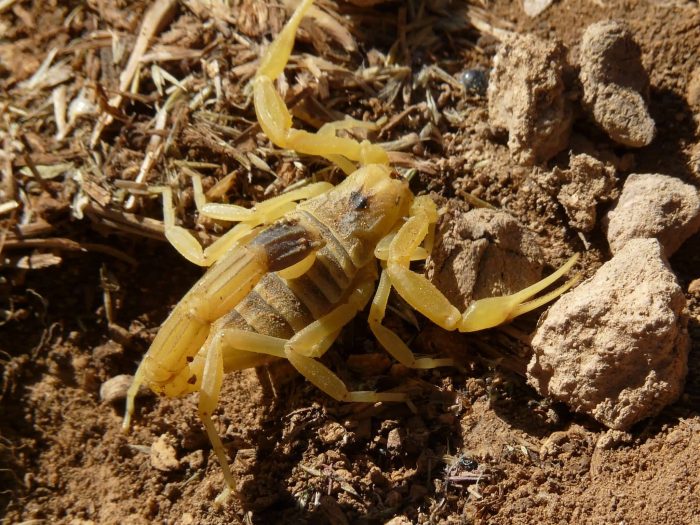
Alastair Rae /CC BY-SA 2.0 | Deathstalker
3. Striped Bark Scorpion
The striped bark scorpion is an extremely common scorpion found throughout the midsection of the United States and northern Mexico. It is perhaps the most frequently encountered scorpion in the U.S. A medium-sized scorpion that is rarely longer than 70 mm, the striped bark scorpion is a uniform pale-yellow scorpion that can be identified by two dark, longitudinal stripes on its carapace with a dark triangular above the ocular tubercle.
The striped bark scorpion spends a substantial amount of its time on the ground and can be found in under rock and surface debris. Thousands of people are stung each year by this scorpion, while barefoot or accidentally making contact with the scorpion in houses and other man-made structures. While a sting from striped bark scorpions very rarely deadly, it is painful and causes localized swelling.
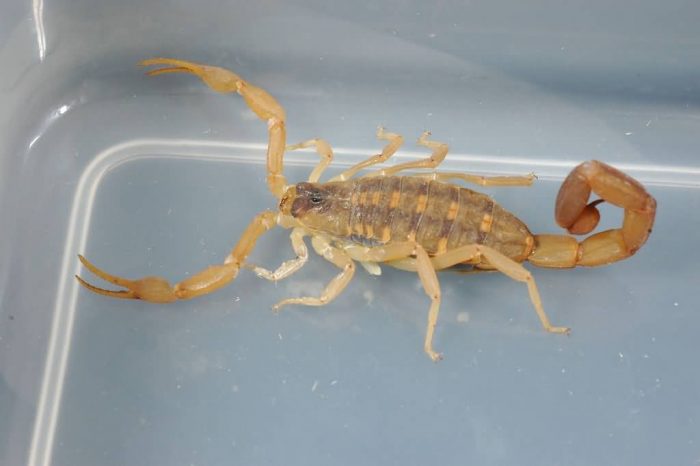
Clinton & Charles Robertson /CC BY 2.0 | Striped Bark Scorpion
4. Arizona Bark Scorpion
The Arizona bark scorpion is a small light brown scorpion common to the Sonoran Desert in southwest United States and northern Mexico. An adult male can reach 8 cm in length, while a female is slightly smaller with a maximum length of 7 cm. The bark scorpion is the most venomous scorpion in North America and its venom can cause severe pain like coupled with numbness, tingling, vomiting and stool in adult humans, typically lasting between 24 to 72 hours.
Fatalities from scorpion envenomation in the USA are rare and are limited to small animals (including small pets), small children, the elderly and adults with compromised immune systems. An antivenom was developed for this species at Arizona State University and produced in quantities sufficient to treat individuals within the state of Arizona.
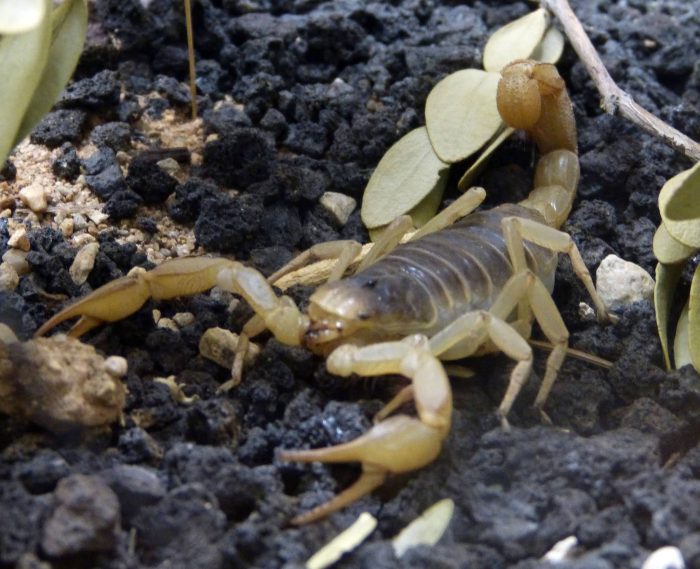
gailhampshire /CC BY 2.0 | Arizona Bark Scorpion

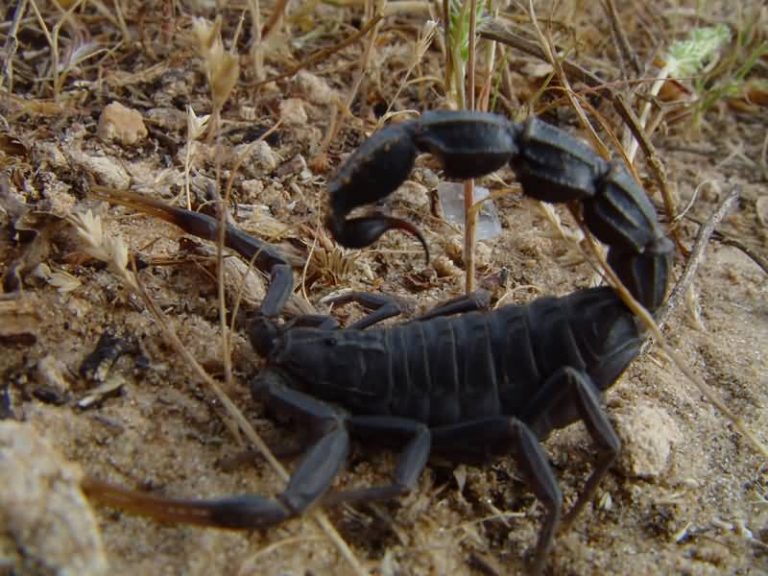

Connect with us